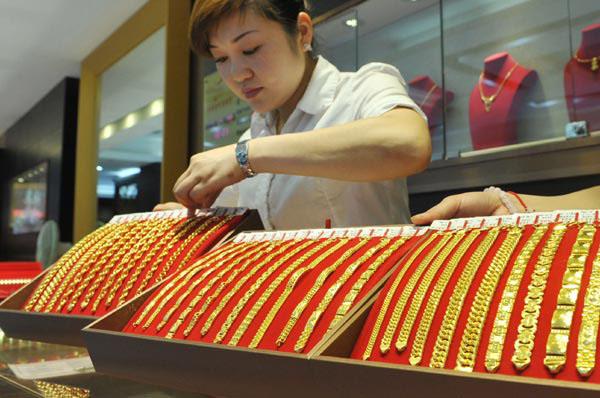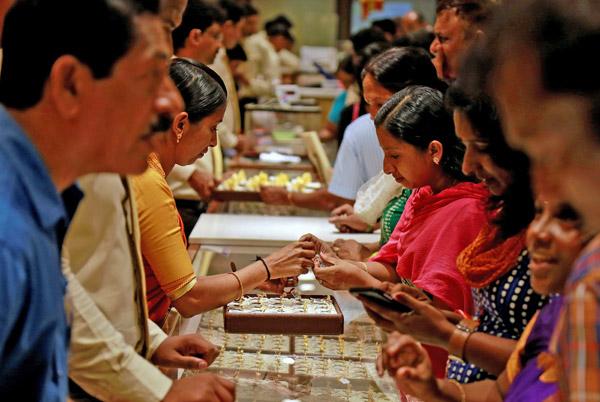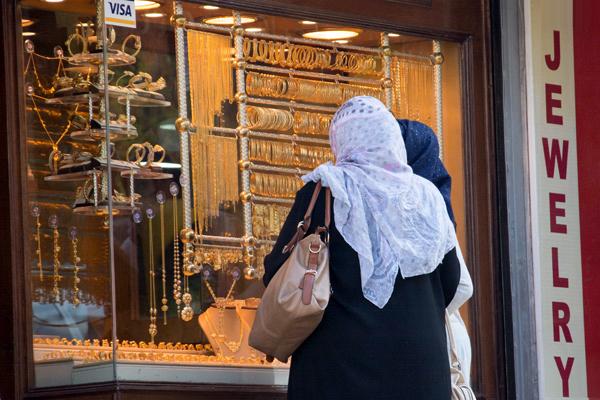LONDON — China overtook India as the biggest consumer of gold in the world last year, ramping up its demand by 32 per cent from the 2012 level, the World Gold Council (WGC) reported on Tuesday.
But globally, investors pulled away from the protection of gold as the risks of inflation and renewed financial crises receded.
Last year, demand from China for gold for jewellery, coins and bars totalled a “remarkable” new record of 1,065.8 tonnes.
That was ahead of Indian demand of 974.8 tonnes, according to the council representing leading gold producers.
Global demand for gold in jewellery last year was the highest for 16 years, but investment funds were heavy sellers and the price fell by nearly a third during the year.
The price is around $1,324.80 an ounce now.
The council also estimated that about 300 tonnes of gold have slipped through its statistics because quantities of the metal are scattered obscurely throughout the supply chain in China.
Inclusion of this missing amount would take total Chinese demand up to about 1,400 tonnes.
“China is number one for the first time,” the council’s Managing Director Marcus Grubb told AFP.
India had always been the biggest market since the 1950s and 1960s, he said.
The switch of places at the top of the ranking reflects in part a decision by the Indian government to reduce the importation of gold to help reduce a huge trade deficit.
These measures triggered a 63 per cent slump in demand for gold from India in the third quarter of last year, the council said, citing official India statistics.
However, for the whole of 2013, demand from India rose by 13 per cent from the level in 2012, partly because of heavy buying before some of the restrictions took effect in July.
Chinese demand was boosted by the rise of a middle class, by rising prosperity, by high levels of savings and by a shortage of other opportunities for investment, Grubb explained.
Last year “proved to be the year of the consumer, with gold jewellery demand close to pre-crisis levels and investment in small bars and coins hitting a record high”, the council indicated in its annual report.
“The result was annual gold demand of 3,756.1 tonnes, valued at $170 billion,” it pointed out.
Referring to disinvestment by exchange-traded funds (ETFs) which use instruments based on physical gold, the council said: “The gold market became polarised in 2013, as 21 per cent growth in demand from consumers and value-seeking investors contrasted with large-scale outflows from ETFs.”
“The net result was a 15 per cent decline in full-year gold demand in a year where jewellery, bar and coin demand reached an all-time high,” it added.
According to the gold council, a sharp fall in the price of gold in the second quarter of last year had provoked “strong and swift” demand from consumers in Asia and the Middle East which spread into Western markets in the last quarter of the year.
The price of gold fell by 28 per cent last year, hit by massive withdrawals of investors’ funds from ETFs.
Gold attracts funds seeking a defence against inflation and financial crises.
As concerns on these two fronts eased, investors reduced their exposure to the protection of gold and the ETFs sold 880.6 tonnes of gold last year, the council calculated.
Central banks overall continued to be net buyers of gold last year for the fourth year in a row, but their purchases in 2013 fell by 32 per cent from the 2012 level to 368.6 tonnes.
These figures meant that demand from consumers did not match disinvestment by funds and a slowing of purchases by central banks.
The supply of gold fell by 2 per cent to 4,339.9 tonnes, mainly because the amount of gold being recycled fell by 14 per cent.
In concluding, the report said that last year there had been an “unprecedented flow of gold from Western vaults to Eastern markets, via refiners in North America, Switzerland and Dubai”.



















